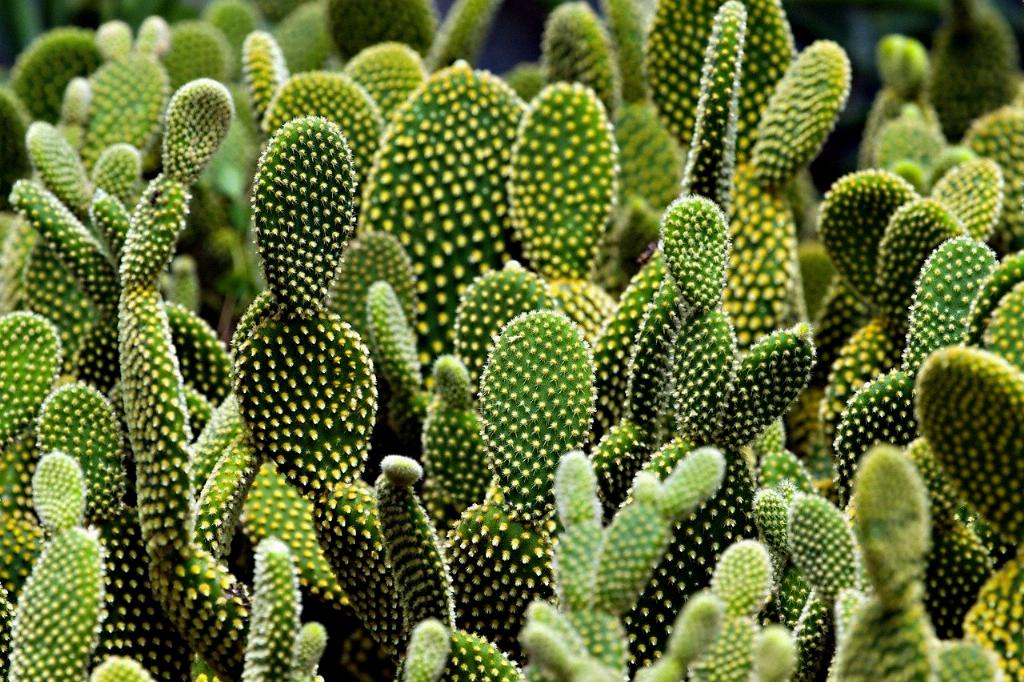Prickly pear cactus, known botanically as Opuntia, is a fascinating plant that captivates with its unique appearance and distinct features. These cacti are not only renowned for their resilience in various climates but also for their ornamental value in landscapes and gardens.
The Structure of Prickly Pear Cactus
When examining the appearance of a prickly pear cactus, one immediately notices its segmented stems, which consist of wide, flat, and thick pads. These pads, covered in spines, contribute to the cactus’s characteristic look, making it easily recognizable among other plant species.
Variability in Spine Types
One intriguing aspect of prickly pear cacti is the diversity in spine types they exhibit. While some varieties feature large, rounded spines that offer protection from predators, others possess tiny, hair-like barbs that can be bothersome if they come into contact with skin.
Handle with Care
Due to the presence of spines that can cause irritation upon contact, handling prickly pear cacti requires caution and care. The tiny barbs, known for detaching from the plant and sticking in the skin, can prove challenging to remove, underscoring the importance of gentle treatment when interacting with these plants.
Distinctive and Attractive Appearance
Despite their prickly nature, prickly pear cacti are revered for their aesthetic appeal. Their segmented stems, adorned with spines of varying shapes, colors, and sizes, create a visually captivating display that adds charm and character to any garden or outdoor space.
Adaptability in Various Environments
Prickly pear cacti are known for their adaptability to diverse environmental conditions, thriving in arid landscapes, deserts, and even gardens with minimal maintenance. Their striking appearance and hardy nature make them a popular choice for landscapers and gardening enthusiasts seeking resilient and visually appealing plant species.
Unique Aesthetic Qualities
One of the most striking features of prickly pear cacti is their ability to merge beauty with functionality. The spines that adorn their pads serve not only as a deterrent to herbivores but also as an ornamental element that enhances the overall allure of these plants.
Color Variations and Patterns
In addition to their structural characteristics, prickly pear cacti exhibit a wide range of color variations and patterns, further contributing to their visual appeal. From vibrant greens to hues of purple, red, and orange, these cacti showcase a spectrum of shades that evolve throughout different seasons.
Understated Elegance in Landscapes
When strategically incorporated into landscaping designs, prickly pear cacti bring an element of understated elegance to outdoor settings. Whether used as focal points in xeriscape gardens or as accent pieces in rockeries, these cacti effortlessly blend beauty with practicality.
Symbolism and Cultural Significance
Beyond their physical appearance, prickly pear cacti hold symbolic significance in various cultures and traditions. Often representing endurance, resilience, and adaptability, these plants evoke a sense of strength and tenacity that resonates with individuals drawn to their profound symbolism.
Celebrating Nature’s Diversity
In essence, exploring the appearance of prickly pear cactus reveals not only a visually stunning plant species but also a testament to nature’s diversity and ingenuity. From their intricate spines to their vibrant colors, these cacti stand as a reminder of the awe-inspiring beauty found in the natural world.

